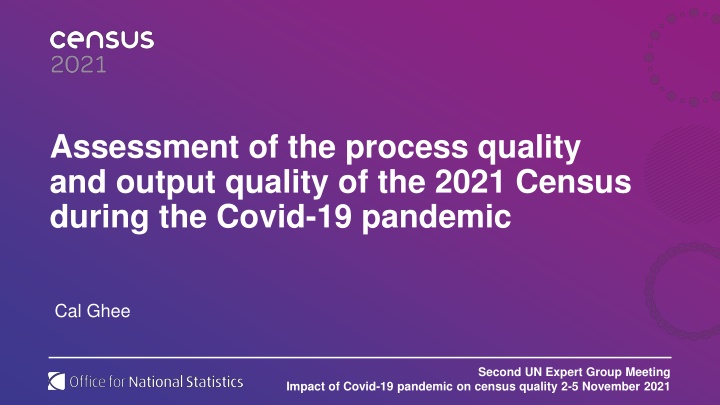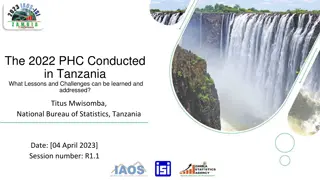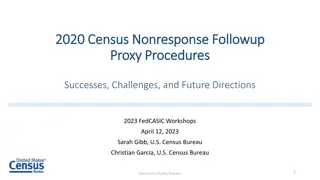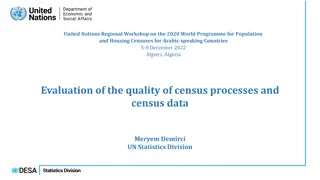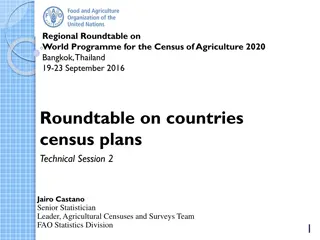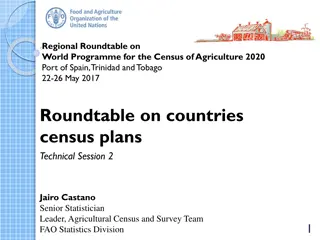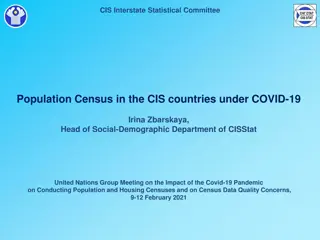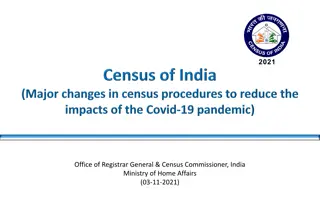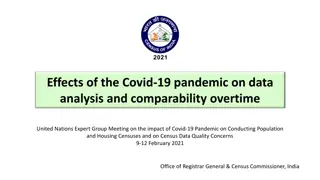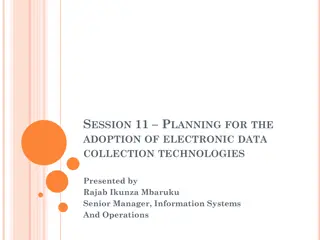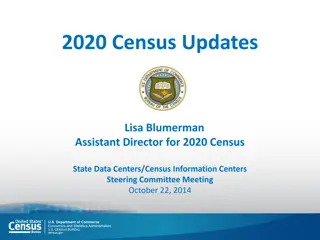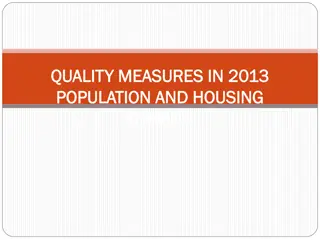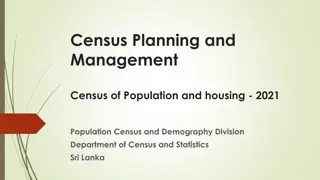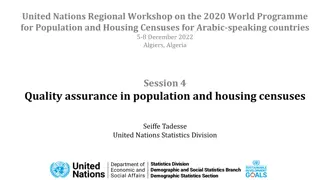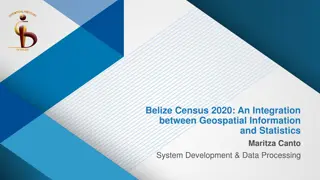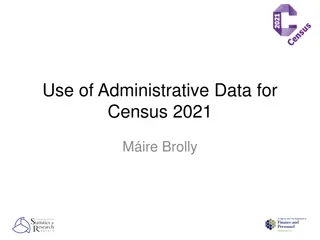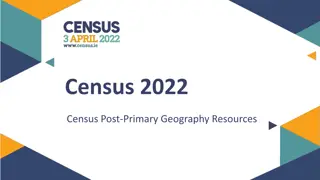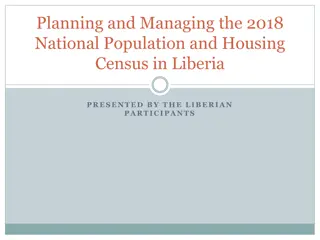Assessment of the process quality and output quality of the 2021 Census during the Covid-19 pandemic
This report evaluates the process and output quality of the 2021 Census amidst the Covid-19 pandemic. It discusses strategies for handling under/over-coverage, impacts of the pandemic on census quality, and methodologies used for estimation and imputation. The document also highlights the UK context, census approach, and the effects of Covid-19 on census operations.
Download Presentation

Please find below an Image/Link to download the presentation.
The content on the website is provided AS IS for your information and personal use only. It may not be sold, licensed, or shared on other websites without obtaining consent from the author.If you encounter any issues during the download, it is possible that the publisher has removed the file from their server.
You are allowed to download the files provided on this website for personal or commercial use, subject to the condition that they are used lawfully. All files are the property of their respective owners.
The content on the website is provided AS IS for your information and personal use only. It may not be sold, licensed, or shared on other websites without obtaining consent from the author.
E N D
Presentation Transcript
Assessment of the process quality and output quality of the 2021 Census during the Covid-19 pandemic Cal Ghee Second UN Expert Group Meeting Impact of Covid-19 pandemic on census quality 2-5 November 2021
Contents 1. UK context 2. Our strategy for measuring under/over-coverage and imputing non-responses 3. Impacts of the Covid-19 pandemic on that strategy 4. Summary Impact of Covid-19 pandemic on census quality
3 censuses in the UK: England and Wales 21/3/21 Northern Ireland 21/3/21 Scotland UK context 20/3/22 Census approach Collection Respondent self-response with media and community engagement, non-response follow-up by field and reminder letters Online self-response questionnaire; telephone capture available; limited paper questionnaires provided as first contact, but available on request Communal establishment/collective dwelling respondent self-response but with additional support to managers from dedicated field officers Placeholder/proxy collection for all remaining non-responding households and communal establishments at the end of the collection phase Post-enumeration face-to-face doorstep survey to assess and correct for under- and over-coverage Coverage estimation and imputation for non-response Processing Resultant census database is an estimate, fully imputed for missing items, people and households Administrative Data Admin data Preparation, collection and processing supported by use of administrative data Impact of Covid-19 pandemic on census quality
Coverage estimation and imputation for non-responding people and households Census matched to post-enumeration survey Logistic regression model making use of paradata, eg local response rates, number of field visits Statistical model to estimate undercoverage using dual-system estimation approach match census to itself to assess for overcoverage alternative estimate of number of households (resolving unresolved cases, indications of new addresses) within-household undercount assessment residual bias: eg populations don t engage with either census or PES assessment of odds-ratio approach using an independent source Assessments of overcoverage, dependence biases Creates estimates of non-response, by key characteristics Validation of results: comparator sources, demographic analyses Key Demonstrated methods in previous censuses Greater use of paradata from collection, largely already planned in Additional measures as a result of the impact of the pandemic Fully impute missing people and households Impact of Covid-19 pandemic on census quality
Impacts from the pandemic Relevance of admin data Impacts how we can validate results To note that strategy doesn t rely on admin data sources, but uses them where appropriate Eg health records to assess odds ratio approach is appropriate, as non-inclusion on database assessed as independent from inclusion in census and PES What the census is measuring, where the pandemic most likely to have changed things, and impacts on collection students people working from home staying at 2nd home demographic patterns (impacts how we can rely on demographic analyses in validation of results) relevance of census snapshot to post-pandemic circumstances In progress: independent assessment of the impact of pandemic on admin data quality Reinforces good practice: need to understand our comparator sources in the context of what we re measuring Impact of Covid-19 pandemic on census quality
Summary: key lessons The standard design is robust, and the return rate was better than expected We already planned to make use of increased amount of paradata from collection, and increased availability of admin sources Robust We had some adaptations ready (for circumstances we ve met in previous censuses) We are assessing risks, and can adapt the existing strategy further, due to new issues, including impact of pandemic Eg our approach to students; Eg the extra assessments we re running to check for any further biases Flexible how what you flex in collection, impacts how you process and what you can output how comparator sources relate to collected data the current population: there is value in having census results in the time of the pandemic Understanding Impact of Covid-19 pandemic on census quality
Thank you 2021CensusStatsDesign@ons.gov.uk
